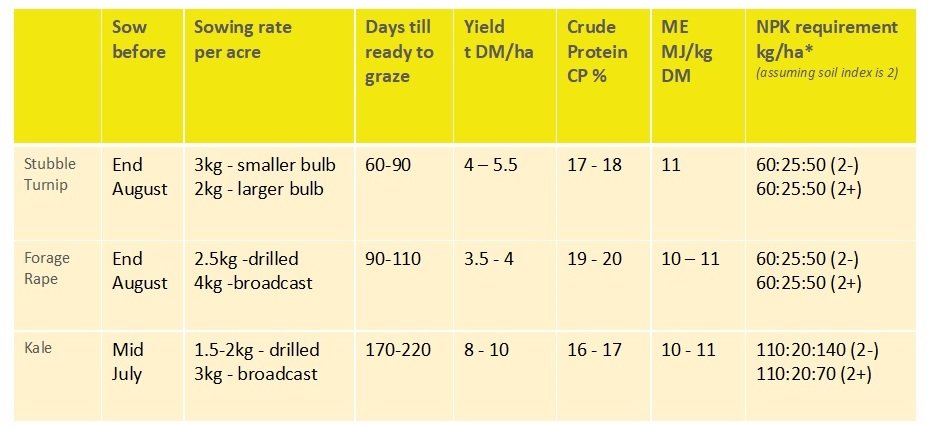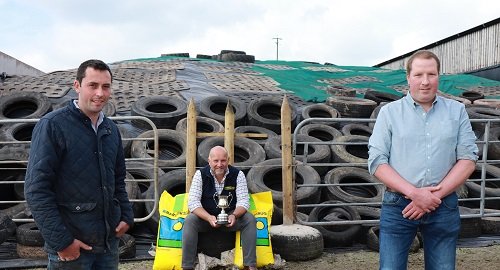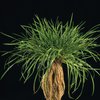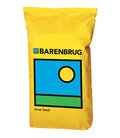Bar Tech June 2021
Welcome to the latest BarTech with thoughts, tops tips and advice from the UK Grass Experts.

Welcome to the latest BarTech with thoughts, tops tips and advice from the UK Grass Experts.
Brassicas are a useful tool for reseeding because a summer establishment can interrupt the Cranefly lifecycle making them beneficial between grass crops where high burdens of leatherjackets are known to be a problem. As well as helping combat pest issues, brassicas help to reduce weed and disease burdens, create better soil conditions and cleaner seedbeds for establishing new swards of grass.
Forage brassica crops have been widely used to supplement forage diets in summer and autumn/winter, when growth is limited in animal production systems, because of the ability to produce high yields of high-quality forage.
What is a brassica crop?
The three most common brassica crops are stubble turnips, forage rape and kale. Kale can produce double the dry matter per ha compared to forage rape and stubble turnips but requires higher inputs and longer to grow whereas forage rape and stubble turnips, are a catch crop option which can be ready to graze in 3 – 4 months from sowing. Dates and rate of establishment will obviously vary dependant on geographical location, fertility, and weather conditions.
Stubble turnips tend to be higher in energy than forage rape or kale which are higher in protein. The bulb size of a stubble turnip crop can be influenced by sowing rate, a lower rate will encourage larger bulbs resulting in more energy in the crop whereas a higher sowing rate will encourage smaller bulbs and more leaf.
Establishing a brassica crop
When selecting your field, soils should be free draining with a pH of 6 or more and ideally a good level of shelter for grazing livestock. Try to avoid fields with very steep slopes to avoid run off and soil erosion.
Forage brassicas lack structural fibre, therefore an adlib source of course fibre from silage (hay or straw) should always be available to maintain rumen function and prevent acidosis and bloat. Our top tip is to place all bales in the field prior to the start of the grazing period, especially before autumn/winter feeding, to prevent damage to soil when entering the field during these wetter periods.
It is important to include a lie back area, either within the field or utilising an adjoining grass field, to keep the animals clean, give them somewhere to lie down and allow their feet to dry.
As well as the important points of fibre and a lie back area, there should always be a supply of minerals as brassicas tend to be high in Calcium but low in phosphorus, magnesium, copper, iodine and selenium and ensure that fresh water is always available.

*NPK requirement from AHDB Nutrient Management Guide Section 3: Grass & Forage Crops. Assumes Soil Index 2.
At 30% dietary inclusion, a stocking density of 18 cows or 25 youngstock/hectare for 100 days should be achievable with kale crops producing 11 t DM/ha. Stubble turnips with a typical yield of 5.6t DM/ha should support approximately 5 cows or 7 youngstock/ha for 100 days. Assuming the brassicas are 70% of the diet, the same kale crop will feed 66 ewes, 51 lambs, 10 suckler cows or 11 store cattle/ha for 100 days and the stubble turnips will support 44 ewes, 34 lambs, 6 suckler cows or 7 store cattle/ha for 100 days. The most efficient utilisation of grazed brassica crops is when strip grazing with an electric fence, so stock is allowed a relatively small fresh crop area each day.
When to utilise
The most efficient utilisation of grazed brassica crops is when strip grazing with an electric fence, so stock is allowed a relatively small fresh crop area each day. Using a long narrow feed face, moved daily will produce the best utilisation and give all animals access. Stock should receive a maximum of 70% of dietary dry matter from brassicas, apart from milking cows which should receive no more than 30% to prevent milk taint.
Top forage brassica management tips
 This year’s silage competition saw a different style of approach for the Fermanagh Grassland Club with Covid preventing any on farm visits and limiting contact between members and judges. Thankfully, thanks to the expertise of Kyla McKinstry from AFBI Hillsborough, all was not lost as she took on the role of independent judge of the silage analysis for samples taken on each farm.
This year’s silage competition saw a different style of approach for the Fermanagh Grassland Club with Covid preventing any on farm visits and limiting contact between members and judges. Thankfully, thanks to the expertise of Kyla McKinstry from AFBI Hillsborough, all was not lost as she took on the role of independent judge of the silage analysis for samples taken on each farm.
As always in the competition, the standard was very high, so much so that we had two first prize winners in the clamp silage section. As news of the winners came through, Covid restrictions lifted considerably and allowed David Linton, N.I. Regional Manager for Barenbrug UK Ltd, the opportunity to visit the individual farms and congratulate the prize winners in person.
David commented “It is always a pleasure to come back and visit members of the Fermanagh Grassland Club and although things have been different in terms of meeting up with each other, it is encouraging to see that the good work of the club was still going on behind the scenes and the silage competition went on ahead as usual. 2020 was a difficult year for many and staying at home was a burden made slightly easier by the spell of good weather that we enjoyed in the first half of the year. I am delighted to see that the Fermanagh farmers made the most of that good weather and produced silage crops second to none in terms of yield and quality. Barenbrug UK Ltd have been proud sponsors of this competition for many years now and each year has been different, but the expertise of farmers in this part of the country never changes.”
Joint first prize winners, Mark McGrade (Dromore) and James Campbell (Ballinamallard), in the 'pit/clamp' section of the competition. (pictured with the Tisdall Cup & David Linton)
Second prize was awarded to Stewart Grey from Trillick and third prize was awarded to Brian Donaldson (Enniskillen).
First prize in the 'baled' section of the Barenbrug UK Ltd Silage Competition went to Graeme Rutledge from Lisbellaw who was also awarded the Hermon Cup.
Second prize was awarded to David Scott (Drumcose) and third prize went to Robin Clements (Trillick).


Gracehill is our exclusively bred Barenbrug grass variety and a...
Gracehill is our exclusively bred Barenbrug grass variety and a top performing variety across all UK recommended lists as the VERY BEST available forage grass in the market. It is an excellent all-round performer right across the growing season, producing high annual yields under both grazing and silage management. Gracehill’s key feature is its excellent spring growth making it a great choice for early silage production and has been shown to particularly excel in autumn growth for grazing.
It has been a busy time for our grass seed growers across the UK, tiller numbers are high and the rain arrived at the right time to help with grass growth, alongside the temperature increase, we have seen growth rates at an all an all-time high.
Crops looks healthy and disease is low, we still have a way to go, but it looks full of promise. Over the last few weeks we have visited 60-70 fields of grass across the UK and our farmers are hopeful of a good harvest, maybe a week to 10 days behind, with harvest expected in mid to end-July. Weather now is helping grass grow at a steady rate and not too stressed - favourable growing conditions!

A well proven, high yielding kale with good clubroot tolerance.

Multi-purpose forage rape with excellent autumn to early winter feed potential.
Discover our range of grass, forage, clover, herb and legume mixtures for the agriculture sector.
Discover our range of grass, forage, clover, herb and legume mixtures for the agriculture sector.
Discover our range of grass, forage, clover, herb and legume mixtures for the agriculture sector.